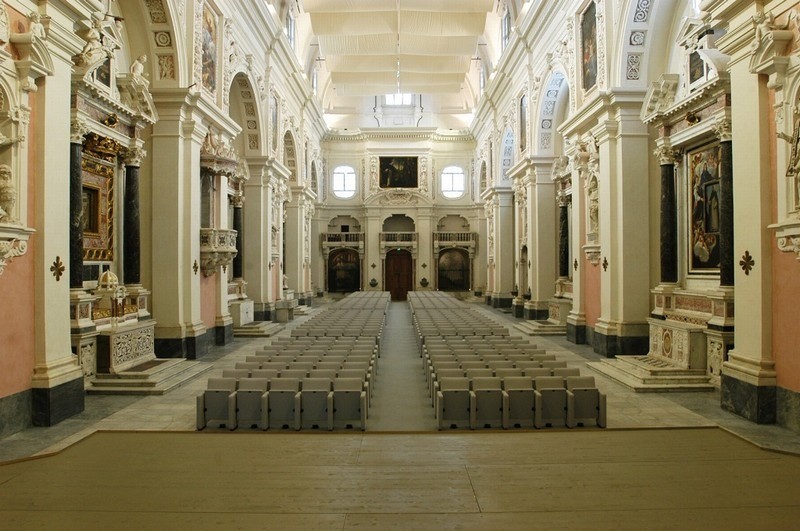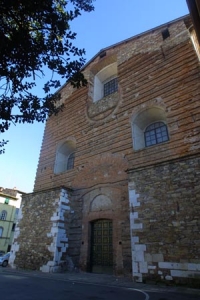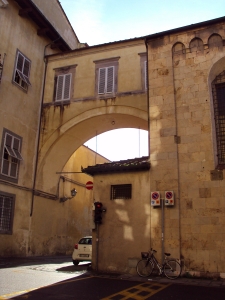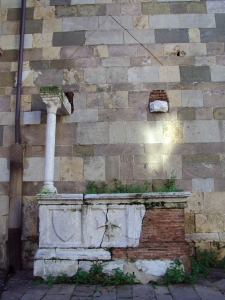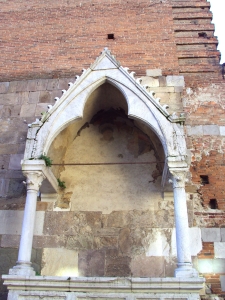
Information
Foundation:
XIII secolo
District/Location:
Lucca
District:
Piana di Lucca

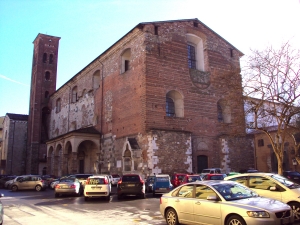
The church and the adjoining convent of Saint Romano, located behind the Ducal Palace and joined by an overpass, represent the oldest and most important Dominican foundation in Lucca. Built on earlier buildings in the second half of the 13th century, they were then repeatedly expanded and restructured in the following centuries.
Piazza S. Romano 55100 Lucca LU Italia
In 1237 the Dominican friars arrived in Lucca and settled in the small church of San Romano, already mentioned in the 8th century and built in an area on which the oratories of San Giuliano and San Bartolomeo also insisted. In the space of a few decades the increased fortunes of the order led to the demolition of the three buildings and the construction of a new church dedicated to San Romano, solemnly consecrated in 1281 and used already in 1288 to house the general chapter of the order, bearing witness to the prestige of the Lucchese convent: the church had the usual single hall layout typical of the conventual structures and was probably endowed with a significant pictorial decoration, as witnessed by the fragments of frescoes recently emerged in the presbytery area and datable to the end of the thirteenth century. It is in the presbyterial area that the largest extension of the following century is placed: it was in fact in 1373, close to the destruction of the fortress of Augusta di Castruccio Castracani and partly also using the stones of Augusta itself, which were built five chapels side-by-side terminals, in addition to a general raising of the building. In none of these phases the façade was completed, prepared for a decoration with marble slabs but remained bare, also due to the shifting of the privileged access to the church on the north side: a portico was then added to it and found there location of some monumental tombs of noble city families. In the 15th century the convent came under the jurisdiction of the Dominicans of San Marco in Florence: it was precisely at this stage that two altarpieces of Fra 'Bartolomeo, the Madonna della Misericordia and the Eternal with St. Catherine were sent to Lucca Saint Mary Magdalene, both passed to civic collections following the 19th century demarcation processes and now preserved in Villa Guinigi. The interior of the church as we see it today is instead the result of a substantial intervention of the second half of the 17th century, by the architect Francesco Buonamici: in those years (from 1660 to 1666) a new shell was built inside so he completely hid the garment of the previous building. The church is closed to worship and belonging to the Municipality of Lucca: after a substantial restoration, it is now used as an auditorium and concert hall. The annexed monastery has housed a barracks since the 19th century and has lost all historical and artistic features of interest. The exceptions are the chapter house and one arm of one of the three original cloisters, adjacent to the church: in the cloister many late medieval tombs are preserved.
Scopri altre attrazioni vicino a Saint Romano
See allYou may also like..
See allFind more
0








